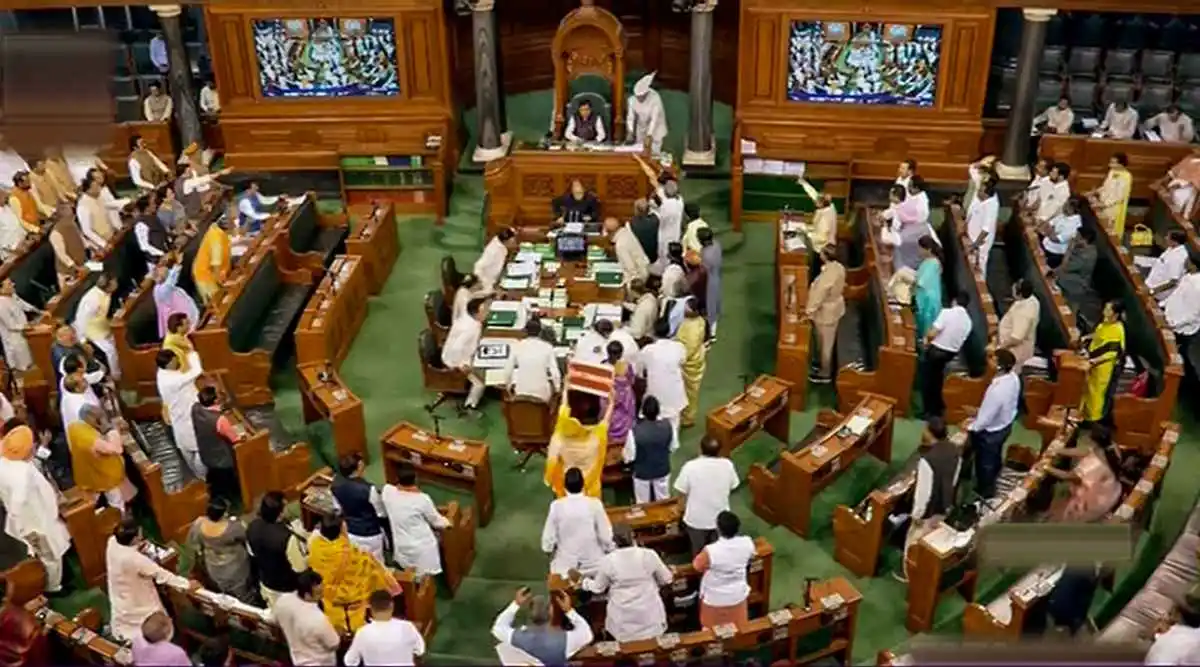NEW DELHI: Congress made the entire politics of the Opposition about itself.
The Opposition has adopted an aggressive approach which has been quite apparent since the formation of government, however, the picture that surfaced during the Budget Session is that the Congress has been trying to run the Opposition on its own terms.
The Congress seems to have forgotten that from 1984 to 2014, Congress-led governments never secured a majority on their own. During the UPA’s rule from 2004 to 2014, Congress struggled to cross the 145-seat mark once and reached 200 seats with great difficulty the second time, resulting in coalition governments. Congress managed to stay in power by making post-election arrangements rather than winning outright. The party did not have a popular leader who could attract votes based on their appeal.
Former Congress president Sonia Gandhi, in her quest to retain power, weakened the party organisation. Now, Congress is trying to destabilize the NDA government, even though Prime Minister Narendra Modi was declared the NDA’s leader before the 2014 elections. The NDA has been fighting the Lok Sabha elections under his leadership and securing a majority.
On what basis is the Opposition considering the government weak? Firstly, the I.N.D.I Alliance led by the Congress couldn’t secure as many seats as the BJP did on its own. The Congress itself was limited to just 99 seats. The Opposition’s victories in North India were largely due to spreading the canard that reservations would be ended.
Even after ten years of Modi government, the Opposition has failed to create a situation that would lead to an electoral victory based on issues. Congress seems to have forgotten that the very parties it now allies with were once responsible for weakening its powerful leader, Indira Gandhi. After Indira Gandhi’s decline, Congress never fully recovered. Though Congress managed to stay afloat after her death, caste politics fragmented the party, and numerous regional parties emerged in the Opposition. Even during Rajiv Gandhi’s tenure, Congress couldn’t secure a majority, and after his death, the party resorted to horse-trading. This kind of political manoeuvring was detrimental not only to Congress but also to the country. When Sonia Gandhi assumed leadership of Congress, her pursuit of power led her to prioritize alliances over building the party’s strength independently.
After getting 145 seats in 2004, Sonia Gandhi did not delay in forming a coalition government with the support of regional parties like SP, BSP, RJD, TMC, DMK. After not getting a majority in 2009, senior Congress leader Janardan Dwivedi had suggested to the party not to form the government. His argument was that Congress should fight for a majority on its own, but the party did not listen to him. As a result, UPA II became so notorious for corruption that Congress delivered its worst performance since Independence in 2014, failing to even qualify as the Leader of the Opposition. After taking over the party’s leadership, Rahul Gandhi continued the political approach of his mother, Sonia Gandhi.
Instead of strengthening the party
During the budget session, SP leader Akhilesh Yadav stood behind Rahul in the Lok Sabha protests, while Jaya Bachchan took charge in the Rajya Sabha. Jaya’s actions suggested she was trying to appease Congress, even to the point of questioning the Chairman’s chair, despite being a five-time senior member.
Mallikarjun Kharge was also trying to please Sonia Gandhi by creating a ruckus in the Rajya Sabha. In the Lok Sabha, Rahul Gandhi’s speech on casteism and budget clearly showed that he was venting out his frustration of being in Opposition for ten years. He was behaving as if the House would run according to him. The strategy of the Congress seems to be the same as that adopted against Indira Gandhi in the 1980s. Protests are being held on the smallest issues—issues like caste, switching off the microphone. It is clear that the Gandhi family wants to run the entire politics of the Opposition around itself. When the others realise that the Congress is serving its own interests, then the difficulties of the Congress will increase.

